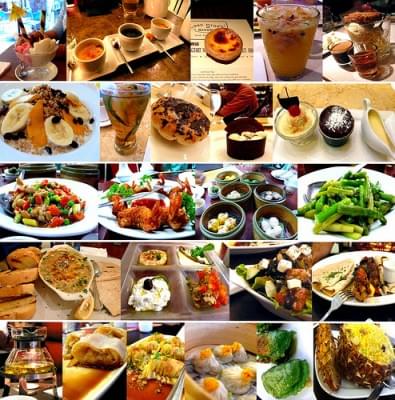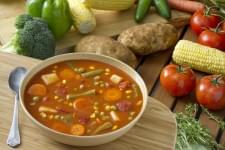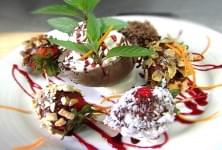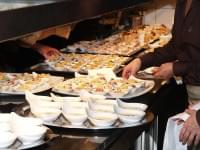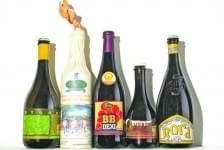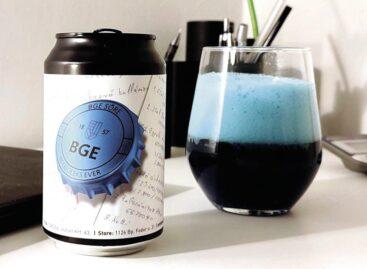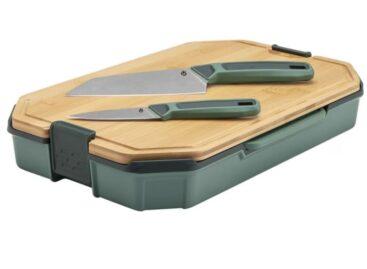Magazine: Horeca trend analysis 2012
Trend analysis
2012 will be a difficult year for bar and restaurant owners but it seems that the majority of the trade are capable of adapting to changing consumer demand. In this analysis we are trying to find the winning solutions: those where global trends meet domestic ones. We tried to pick the most important trends, focusing on the Hungarian market and consumers but international aspects are not dismissed either.
Establishment types
Coffee bar
It is sad but true: the heyday of coffeehouses and espresso bars is over. However, coffee bars are still an ideal ‘third pace’ between home and workplace. Anyone can do this genre well who understands the new functions of this establishment type.
Food bar
Sandwich, soup and other bars cannot really compete with international fats food chains. Coffee bars also bite off an ever-bigger piece from the sandwich market.
Wine bar
Wine bars work best if they are combined with a wine shop. As for their food selection: some of them go in the direction of bistro kitchen (Wine Kitchen), while others stick with wine snacks (DropShop).
Cocktail bar
These bars now function as some kind of social space and most of the guests are women who pop in for a cocktail and a chat after work, late afternoon or early evening (Boutiq’ Bar). These places often sell champagne by the glass, sometimes even the best French brands.
Brewery-beer bar
Artisan products have come into fashion among beers as well. Many of these places pay great attention to matching beer with food.
Here one moment, gone the next
Pop-up restaurants: these work for a short period of time and disappear or go to a new place. The magic comes from the feeling of ‘only here and now’; their Hungarian counterparts are ‘ruin pubs.’
Food trucks: this area is developing most rapidly in the USA, these moving restaurants specialise in different cuisines and inform guests about their whereabouts via Twitter, Facebook or smartphone apps.
Cuisine
International cuisine
As part of the gastro-globalisation trend, flavours and characteristic dishes of different cuisines are not separated any more but are present together. Big cities all over the world have ‘dining markets’ where the dishes of many nations can be tasted at the same place.
Fresh, seasonal and local
One of the most important prerequisites of good food is quality ingredients. Many restaurants sign contracts with local farmers who supply them with what they need. Some of these places even make their own jam, pickles, etc. which they sell (Brill Bistro – Békéscsaba, Kistücsök – Balatonszemes).
Chef-centric cuisine
Formerly popular national or fusion cuisine is replaced with creative, chef-centric cuisine, where seasonal, local ingredients and the chef’s style and personality dominate. There are only few dishes on the menu card and every day/week there is a special offer (Olimpia, Almárium).
New and rediscovered kitchen technologies
In the last 5-8 years the latest kitchen technologies appeared in Hungary and at the same time a few traditional kitchen methods were rediscovered. When these two are mixed and the right equipment is used, the result is constant good quality (Bock bistro, Olimpia).
Using new meats and meat cuts
Alongside the meat cuts with great prestige, intestines and head have also been used more frequently in the last few years. Meats are cut using new methods and the result is the appearance of new parts to roast (Denver steak, Petite Tender, Pork Flat Iron).
Desserts
Desserts are becoming more and more spectacular and a growing number of special ingredients are used. We rediscover classic Hungarian cakes and sometimes they are reinterpreted as well.
New naturalism
New naturalism as a style is present in cuisine, restaurant design and consumer attitude at the same time. Regional ingredients, traditional methods, simple dishes and more, but smaller courses are characteristic of this style, e.g. Noma in Copenhagen.
Consumer attitude
Healthy
The terms wellness and fitness are becoming outdated in the culinary world. At the same time more attention is paid to guests with food allergies and wheat intolerance. ‘From organic farming’ is becoming a very important piece of information on the menu card.
No matter which part of the day it is
For the new generations traditional times of meals lost their significance. All over the world breakfast menus are offered until lunchtime or all day and many restaurants serve dinner until the morning. Party-goers created the concept ‘fourth meal.’
Bargain prices
Lunchtime menus have become popular in 2011 in Hungary – and they are offered at bargain prices, which means that the main goal is not making profits but luring new guests. There would be consumer demand for all-you-can-eat type restaurants but they can only be operated profitably as parts of a chain.
Marketing
Infocommunication
Infocommunication and especially social media are of key importance in restaurant marketing. With the conquest of smartphones there is great potential in restaurants’ own apps. Instead of being a competitive advantage, free wi-fi is becoming a basic service in restaurants.
Small portions
Guests like to try many things and they love variety: the easiest answer to this demand is small portions. Not only with main dishes but also in the case of desserts. In Hungary small wine portions mostly come with meals, but pálinka and beer menus are now sold separately (Barbár, Pater Marcus).
Drinks
Artisan and special beers
Beer consumption is declining in Hungary but more artisan and special beers are consumed. Beer and food matches are popular, beer sommeliers are employed and beer dinners are also trendy (Olimpia). Low-alcohol fruit-flavoured beers were very successful last year.
Quality distillates
Pálinka is the spirit of choice in restaurants – in all categories. Pálinka consumption grew in bars and pubs too, but flavoured vodkas and rums also did well. Top-category (malt) whiskies, cognacs and rums were popular.
***
Top trends
Restaurants with own vegetable and herb garden ***
Want to know more?
More detailed analysis of the above trends is available in former issues of Trade magazin:
General trend analysis: 2010/12
Locally made breads and pastas
Asian cuisine’s new star is modern Thai cuisine
Restaurants with a family atmosphere and novelty food
Using special ingredients (horse meat, goose egg, etc.)
Vegetables in deserts and ice creams
Potato conquers again
Top chefs in fast food restaurants
Lots of information about dishes
French canelé is the new ‘it’ dessert
Visiting a wine cellar where a meal is also served
Fast casual is still developing most rapidly
In Hungary the prestige of cider and sparkling wine is growing
Dessert: 2010/1-2
Food truck: 2010/3
Infocommunication: 2011/5; 2011/4; 2010/11, 2010/10
Small portions: 2010/7
Cocktails: 2011/6-7; 2010/12; 2010/5
Pálinka: 2011/5; 2010/11
Pop-up restaurants: 2011/6-7
Beer: 2011/11; 2011/6-7; 2011/5
Breakfast: 2010/12
Related news
Related news
(HU) Hóna alatt konyhapultjával… – A nap videója
Sorry, this entry is only available in HU.
Read more >







